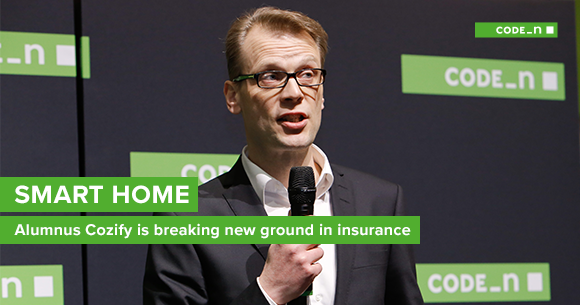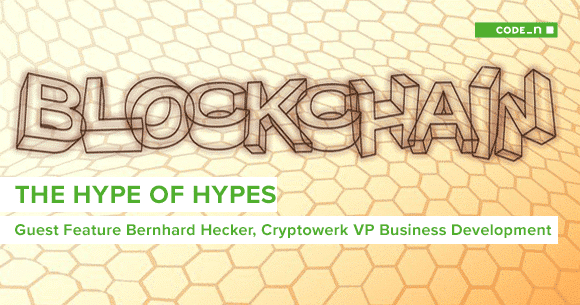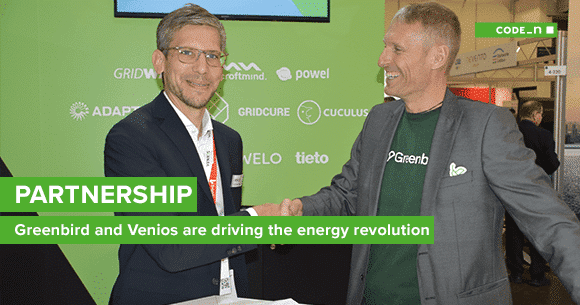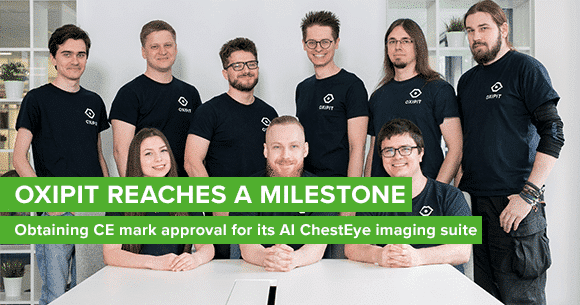Antti Vihavainen of Cozify: “Obeying lean startup principles – that’s easy to say, but it’s really difficult to get right”
Cozify – Revolutionizing Home Automation, something we headlined in 2015! At the time, the CODE_n15 contestant was pursuing a vision to provide home automation to everyone. In a follow-up with Antti Vihavainen 10 months after participating in the CONTEST, he told us the latest developments regarding the successful shipping of the first Cozify hubs, which also brought valuable customer and market insights. Cooperation with big players and continuous work with international channel partners really helped boost the business. “Obviously our task is to copy and improve on the progress we made in Finland,” Antti now tells us. Two years on, we had the pleasure of chatting with him again and so much has happened. Prepare yourself for the fact that Cozify is daring to transform the insurance sector from acting as a reactive provider of compensation to becoming a proactive companion in life – based on an enhanced vision of expanding out of the smart home toward a more comprehensive smart living concept! Fail fast, iterate fast, and the balancing act between quick revenue and hunting scalable opportunities are just some of the topics Antti discussed with us.

Lisa: Hi Antti, it’s great to catch up with you! Again, in a nutshell: What’s unique about your service?
Antti: Cozify is an IoT platform that can be utilized to add value to the core business of our channel partners. We customize smart home solutions to fit the needs and use cases required by our channel partners, such as insurers, operators, and constructors. This may include pre-provisioned rules and functionality as well as custom smart devices.
Lisa: You recently launched the first smart home insurance in Scandinavia with LocalTapiola, the largest mutual insurance company in Finland. Congratulations on the cooperation! Why do you think people need this novel kind of insurance?
Antti: Thank you, we’re extremely excited about this cooperation. Consumers can avoid the hassle of home renovations if they can prevent things like water damage from a leaking dishwasher. This transforms the insurance company from acting as a reactive provider of compensation to a proactive companion in life.
Lisa: What’s happened with the IoT megatrend since you participated in the global CODE_n CONTEST in 2015? And where will developments take us in the future?
Antti: A lot has changed. The industry is moving away from the early adopters toward the early majority of consumers, and that requires new types of products and innovative user interfaces. Amazon Echo is definitely an interesting product that will introduce the concept of connected devices to a large number of people. However, currently a smart speaker is mainly just a user-friendly remote control. It needs a smart automation engine to go with it.
Lisa: What’s your attitude toward enterprise culture and leadership? Do you have a specific vision you’re pursuing in this area?
Antti: We believe that the smart home industry is still very small compared to its potential size. So we want to share as much of our experience as possible (while abiding to NDAs) and push the whole industry forward.
Lisa: On your website, you mention that you and the team are “occasionally failing, but always learning.” What’s your attitude toward failure? How do you deal with failure – and do you have a specific approach to learning?
Antti: In terms of the technical side: The first thing we made 100% bulletproof was the update mechanism. That now allows us to develop features that have been tested by the beta tester community. If there are any glitches or opportunities to make improvements, we can deliver them fast and completely transparently. When it comes to the business side of things, we want to base our decisions on data that we’ve gathered from our customer interactions. We’re constantly testing different price points and service models, also to ensure the best possible outcome for all, and we want to share that information with our B2B partners.
Lisa: If you had to start all over again from scratch, what would you do differently?
Antti: To be honest, there have been some remnants of the waterfall approach and we’ve not always been true to our learning methodology, which was based on lean startup. As a result, we invested in some technical features before they actually proved to be of value to our customers and partners. Just quickly testing different use cases or business opportunities, preferably with shorter selling cycles, would have made it easier to make progress. Regarding business issues, I think we could have eliminated some of the strategic options earlier to free up resources for more promising verticals.
Lisa: What would you do the same way again?
Antti: Of course we would do most things the same way, but some of the more controversial issues were directly related to our consumer channel. It took up quite a lot of our operational resources, but that did enable us to learn along the way and we did maintain full control of timing and functionality during launches. As a result, we were able to iterate faster than if we’d only had a channel strategy.
Lisa: What have been the biggest obstacles you’ve had to overcome in setting up your company?
Antti: Partnering with large companies takes a lot of time and patience. It has been a balancing act identifying quick revenue while also hunting for big, scalable opportunities.
Lisa: If you could give new business founders or people thinking of setting up a business three tips, what would they be?
Antti: Start with your own problem statement, which you have to understand in detail, and create the most suitable solution for that problem. However, be quick to test your solution with real customers and be prepared to adjust it based on the feedback. That’s easy to say, but it’s really difficult to get right. For many technology businesses, timing is as important as the solution. If you’re too early, you might run out of money before you kick-start the market. If you’re too late, the big boys may have claimed the market already.
Lisa: Bootstrapping or VC? What do you vote for?
Antti: Bootstrapping for anyone who can afford it, as long as they’re not in a terrible hurry to grow. If there’s an opportunity to scale up and you need to step on the gas, resort to VC resources.
Lisa: What are your next steps?
Antti: We recently launched a smart home insurance offering with the biggest mutual insurer in Finland. The next step now is to multiply that to other countries. At the same time, we’re expanding from the smart home toward a more comprehensive smart living concept.
Lisa: Thank you for the insights! We hope to get the chance to catch up in person at Slush 2017 in Helsinki 🙂.






Write a comment